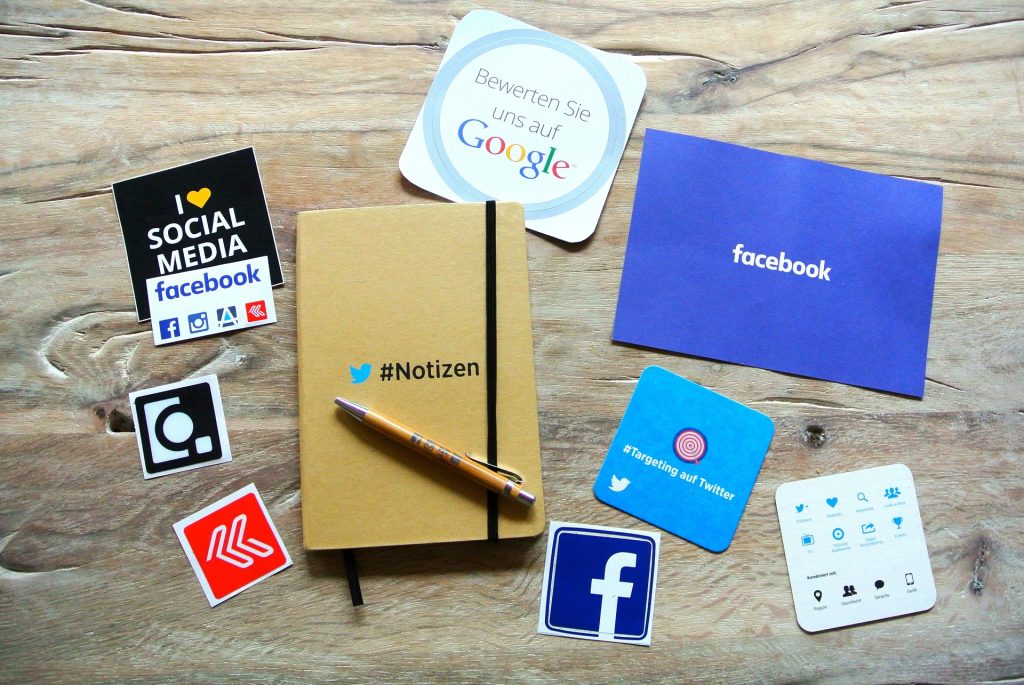Aminath Zifna
Lead Instructional Designer, 2021

Social media has become successful with its access to reach millions of people and the strength of encouraging collaboration and sharing.
With the proven benefits of social media, it has become an integral part of students’ educational life. Almost every student who is above 13 years of age has their own account such as Facebook, Snap Chat, Instagram etc. While many hold the belief that it is only a platform for entertainment, it is making its mark in the education sector in a positive way. A great number of the educators are relying on these platforms, as they are more familiar to students and keep them engaged for longer periods of time. It goes without saying that social media has become as important of an interface in learning as any other.
What is social media?
Social media allows interactions among people in which they create, share, and/or exchange information and ideas in virtual communities and networks in real time. Social media has become powerful with the characteristics of knowing and including what the user needs, have features that encourage interaction and provide powerful visual and creative tools.
Benefits of social media in education
Today’s students are growing up with social media and it has a range of benefits and opportunities to empower the students.
Social media allows the students to work collaboratively as it gives opportunities to work on different background peers with the possibility of sharing ideas and opinions in a less pressuring environment. For instance, in a physical classroom with a presence of teacher students may feel reluctant to share the ideas than on sharing on blog discussion forum or post a comment on a google doc. Student engagement level on the work assigned using social media tends to be more and this leads to better retention of the knowledge of the content and information. With social media students have increased accessibility of various information sources in multiple formats. For example, a learning content visual presentation can be seen from a YouTube video or an alternative explanation to solve a problem could be shared in a Facebook post. Social media allows students to develop skills such as creativity, technicality and communication. These skills can be exhibited on the social media platform.
Creating videos and uploading on YouTube with the chance of getting positive feedback from the audience allows the self-confidence to be developed. Posting on Facebook and commenting on each other’s Facebook posts allows social skills to be developed. Students tend to be more willing to create and comment on social media platforms than in a traditional classroom. Social media teaches to embrace criticisms, use technology and information safely and cultivate a decent online learning etiquette.
Social media tools
There are many social media tools that are available to use as a learning resource.
The following provides some of the tools it uses.
1. Blogs
Blogs can be described as an online diary or journal which can have an online audience. The content of a blog typically includes text, pictures, videos, animated GIFS, and hard copy documents such as old files. There are many different uses of blogging for the student which includes use for discussions of ideas, posting daily photos, commenting on other writing, practice writing such as working on tiles, conciseness, brainstorming, drafting, peer reviewing etc.
There are many ways teachers can use blogs which includes assigning the homework assignments, sharing content, resources, sharing the due date of the assigned work both with the students and the parents, giving an update of the upcoming assignments and events for both the students and parents. It can be used as a reflection activity where the teacher asks the students to post on what they have learned in the class, write a reflection on what they have learned and how they can relate to the cross curriculum. With a large class it could be used as discussion continuation where every student was not given a chance for discussion in the classroom and can explore more and back up the discussion with research. Blogs can be used in a variety of subjects, for instance teachers can ask the students to explore historical characters/ figure explore how they speak and act and write in the blog and also about historical events and their impact on the world, how it has change people life style, thinking etc, for a particular event student can be asked to search facts, incidents, pictures, maps etc which will allow them to share information about the event from the time and write about the feelings that students like to share with their classmates. Likewise, blogs can be used to track the current events and news. Students can be asked to write down what is happening from their own perspectives. Blogs can be used for writing activities where the teacher asks the students to write a book review, a character that they have been reading, write an alternative ending to the book, and develop secondary characters. In a math class blog can be used to help students with their process by allowing students to post and explain how they have arrived at answers for the word problems and help each other as they learn and practice new topics. Students can be encouraged to talk about the difficulties and worries that they have in attempting the math problems which the teacher can allow them to solve with the help of other classmates who better are having the same experience and have a better comprehension of a similar problem. For a science subject, students can be asked to create science projects and post them from brainstorming ideas about the project to the daily/ weekly progress of the project. Other students in the class can comment on the findings on the projects. In a field work or field trip students can be asked to take pictures and post on the blogs and share what they have discovered and how it can be useful to the topics that they are currently learning, and other students can also share the same experience. Blogs can be used to showcase the artwork/ project that they have been working on individually or in groups.
2. You tube
YouTube is a video sharing service where users can watch, like, share, comment and upload their own videos. For an individual who is 18 years they can set up their own YouTube account and for 13 years they need to get their parents’ consent. YouTube is an immensely powerful web 2.0 tool that could be used to enhance students’ learning. There are many ways students use YouTube such as to search for recent ideas, opinions and new perceptive. To clarify the concepts that they did not fully comprehend in the class students can watch an instructional video on YouTube. It allows visual learning which helps the students to acquire and retain knowledge easily and assist in developing skills by demonstrating it. There are many great tutorials, experiments and illustrations on YouTube where students can watch and enhance their learning at their own pace, by pausing, rewinding and repeating it.
There are numerous ways the teacher can use YouTube in teaching. For a lesson starting activity, the teacher shows a short clip on the topic and is open for discussion and encourages the students to share their thoughts and opinions. To provide deep content knowledge teachers can search and share documentaries. It can be used to show the step-by-step solutions for a problem and to show the process of an experiment. Students can be assigned to search and watch YouTube videos on a particular topic and ask to prepare questions that can be explored and discussed in the classroom. It can be used as an assignment that requires students to research and make videos and share it with the class. In addition, it can be used as homework tasks or to create quizzes based on the video they have watched. Videos that include infographics can be used to introduce a lot of information in a short period of time. It can be used as a reward for the work completion. YouTube videos on interviewing style can be used to develop listening skills where students are asked to note down key points in the video.
3. Google docs
Google docs are used by people all over the world to create content, collaborate with each other and get the work done in real time. It is a free web-based application in which documents and spreadsheets can be created, edited, and stored online. The files can be accessed any time with a device which has internet connection. The users can import, create, edit and update documents and spreadsheets in various fonts and file formats, combining text with formulas, lists, tables and images.
Google docs are a big part of the students’ learning process. To share the work, google docs are particularly useful for the student. Each student can write, edit their own individual work, and do not have to wait for other students to share the work. In using google docs there is no fear of losing the work done as google docs will automatically save the work done and it will show the history of the work contribution. Google docs can be used for collaborative brainstorming with the use of visual representation of their ideas and solutions. This allows the students to get more motivated in completing assigned groupworks. Google form can be used by the students to get the opinions of other members on the team on agreeing on the time to meet for a discussion meeting. Also, this can be used for self-grade quiz. Google slides can be used to make work on assigned projects where each student can edit, share the content at the same time even not working together physically.
Most of the teachers enjoy using google docs as it has numerous benefits of using it. Teachers can use google docs in many situations for example to collect individual responses for a topic covered teacher can use google form quiz, to get the whole class engaged in brainstorming session teacher can ask the student to post in google word doc. Teachers can use google sheets to record the attendance of various meetings and events. Google docs can be used to monitor and track the progress of the students’ work in group work and to give immediate feedback. These also can be used as peer review tools where each student posts a comment on the work done by others. Google Drive is particularly useful for sharing the resources files, videos, photos etc.
4. Facebook, Twitter and Instagram
Facebook is the most popular social media platform that helps to stay connected with the family and friends and to be updated with the current events. Using Facebook photos and links can be shared which can be seen by millions of people. Facebook has a lot of potential to be used as an educational tool. Students use Facebook for sharing information and work, generating ideas, for learning, problem solving, retrieving personal information about others or themselves, chatting, making appointments and generally keeping in touch. Teachers can use Facebook to share educational content, links to important activities, use Facebook live for the classroom debates, seminars, field trips etc. Facebook allows both the students and teachers to connect globally which would enrich the learning.
Twitter is a social network which is used by people to share and discover information. Twitter uses 280 long characters known as tweets. These micro bits of information can contain photos, quotes, articles, links etc. Each tweet can also have replies with creation of real time conversation around the current topics, breaking news and upcoming events. Twitter has been proven to be a useful tool for the teachers and students. It can be used to get the latest trends and news from around the world, share important events that are happening in the classroom with the parents such as class trips and projects the students are working on. Twitter education helps the teacher to get recent and update learning resources. Also get motivational ideas to teach different subjects, follow good examples by other teachers, efficient teaching methods and connect with other teachers. Teachers can assign students to write a review or summary of what they have been reading in the week and ask students to comment on it. Twitter hashtags can be used to encourage open forum discussion and debating about interesting topics.
Instagram is a social media platform that emphasizes photo and video sharing via its mobile app. Users can take, edit, and publish visual content and interact with other users through likes, comments and shares. Like Facebook and twitter, Instagram can be used in sharing educational resources and updates of the classroom’s events and discussions.
In conclusion, with the fast-paced world and the rapidly advancing technological era, we are witnessing great changes that challenges our typical traditional methods. The notion of integrating social media in the field of education and studying is such an example. Despite the doubts concerning the contemporary tool of teaching, researches and lived experiences of many are proving that it can be beneficial and more enjoyable to the parties involved. While each of the separate platforms bring a new angle of interaction to the table, this is a more welcoming alternative that shows more diversity in the type of participants. In addition, it is a golden opportunity for the educators to bring a sense of adventure to the class and for the students, it is an incredible way to explore their creativity within the lessons. All in all, social media is here to stay and it is time we accepted that it does not only limit to entertainment but also includes education and learning.
REFERENCES
Ali, A. M. H. A. (2020). Effectiveness of the use of electronic educational blogs in teaching computers on the achievement of students. Indonesian Journal of Electrical Engineering and Computer Science, 17(1), 489-499.
Anderson, M., & Jiang, J. (2018). Teens, social media & technology 2018. Pew Research Center, 31(2018), 1673-1689.
Auxier, B., & Anderson, M. (2021). Social media use in 2021. Pew Research Center.
Alshehri, O. (2019). Usage and Perceptions of Social Media Tools among Higher Education Instructor. International Journal of Information and Education Technology, 9(7).
Al-Azawei, A. (2019). What Drives Successful Social Media in Education and E-Learning? A Comparative Study on Facebook and Moodle. Journal of Information Technology Education, 18.
Carpenter, J. P., & Morrison, S. A. (2018). Enhancing teacher education… with Twitter?. Phi Delta Kappan, 100(1), 25-28.
Carpenter, J. P., Morrison, S. A., Craft, M., & Lee, M. (2020). How and why are educators using Instagram?. Teaching and teacher education, 96, 103149.
Chintalapati, N., & Daruri, V. S. K. (2017). Examining the use of YouTube as a Learning Resource in higher education: Scale development and validation of TAM model. Telematics and Informatics, 34(6), 853-860.
Chugh, R., & Ruhi, U. (2018). Social media in higher education: A literature review of Facebook. Education and Information Technologies, 23(2), 605-616.
Deeken, A. H., Mukhopadhyay, S., & Jiang, X. S. (2020). Social media in academics and research: 21st‐century tools to turbocharge education, collaboration, and dissemination of research findings. Histopathology, 77(5), 688-699.
Haidov, R., & Bicen, H. (2021). A Content Analysis on Articles Using Twitter in Education: A Content Analysis on Articles Using Twitter in Education. Postmodern Openings, 12(1Sup1).
Huang, Y. T., & Su, S. F. (2018). Motives for Instagram use and topics of interest among young adults. Future Internet, 10(8), 77.
Tang, Y., & Hew, K. F. (2017). Using Twitter for education: Beneficial or simply a waste of time?. Computers & education, 106, 97-118.
Ting, A. (2020). Facilitating the Writing Process in a Blended Learning Environment Using Google Docs. In Enhancing Learning Design for Innovative Teaching in Higher Education (pp. 237-265). IGI Global.
Manca, S. (2020). Snapping, pinning, liking or texting: Investigating social media in higher education beyond Facebook. The Internet and Higher Education, 44, 100707.
Mnkandla, E., & Minnaar, A. (2017). The use of social media in e-learning: A metasynthesis. International Review of Research in Open and Distributed Learning: IRRODL, 18(5), 227-248.
Moghavvemi, S., Sulaiman, A., Jaafar, N. I., & Kasem, N. (2018). Social media as a complementary learning tool for teaching and learning: The case of youtube. The International Journal of Management Education, 16(1), 37-42.
Moreau, E. (2018). What is Instagram, anyway. Here’s what Instagram is all about and how people are using it [online].
Platon, O. E., Caranica, C. N., & Catană, A. (2018). Social Media Tools Used for Teaching and Learning in the Higher Education System. Elearning & Software for Education, 1.
Woodrich, M., & Fan, Y. (2017). Google Docs as a tool for collaborative writing in the middle school classroom. Journal of Information Technology Education: Research, 16(2), 391-410.
Zambrano-Matamala, C., Rojas-Díaz, D., Salcedo-Lagos, P., & López-Jara, O. (2019). Perception of Pedagogy Students About the Usefulness of Blogs in Education. Revista Electrónica Educare, 23(1), 389-404.



